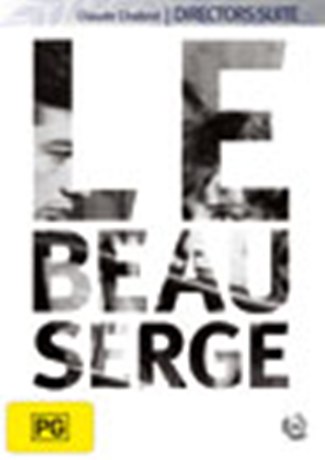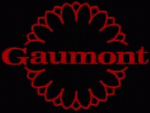Beau Serge, Le (Directors Suite) (1958) |
|
Beau Serge, Le (Directors Suite) (1958) |
|


|
| BUY IT |
| General | Extras | ||
| Category | Drama |
Main Menu Audio & Animation-Full Frame Theatrical Trailer-An Autum Afternoon (Sanma no aji) (1962) Theatrical Trailer-Offside (2006) Theatrical Trailer-The Wind Will Carry Us (Bad ma ra khahad bord) (1999) Theatrical Trailer-Wings of Desire (Der Himmel über Berlin) (1987) |
|
| Rating |

|
||
| Year Of Production | 1958 | ||
| Running Time | 94:36 | ||
| RSDL / Flipper | Dual Layered | Cast & Crew | |
| Start Up | Menu | ||
| Region Coding | 4 | Directed By | Claude Chabrol |
|
Studio
Distributor |
 Madman Entertainment |
Starring |
Gérard Blain Jean-Claude Brialy Michèle Méritz Bernadette Lafont Claude Cerval Jeanne Pérez Edmond Beauchamp André Dino Michel Creuze Claude Chabrol Philippe de Broca |
| Case | Amaray-Transparent | ||
| RPI | $29.95 | Music | Émile Delpierre |
| Video | Audio | ||
| Pan & Scan/Full Frame | Full Frame | French Dolby Digital 2.0 mono (224Kb/s) | |
| Widescreen Aspect Ratio | None | ||
| 16x9 Enhancement | No | ||
| Video Format | 576i (PAL) | ||
| Original Aspect Ratio | 1.37:1 | Miscellaneous | |
| Jacket Pictures | No | ||
| Subtitles | English | Smoking | Yes |
| Annoying Product Placement | No | ||
| Action In or After Credits | No | ||
Claude Chabrol, the most commercial and perhaps most important director to come out of the French New Wave, seems to forever be hidden behind the imposing shadow of Alfred Hitchcock in film theory. The greater part of English language literature dedicated to Hitchcock usually portrays Chabrol as simply an imitator of his preferred director. But behind this popular belief is something more, as Chabrol alongside his Cahiers du cinema colleagues elevated Hitchcock's reputation through their writings and great interest in the cinema of Hitchcock.
Hitchcock equally responded to the new found enthusiasm for his work in France and compared himself to "(the) other young filmmakers," and even stated the then forthcoming production of Psycho (1960) would be of the resulting influence of the French New Wave. Can admiration for another director work overshadow one's own directorial career? In the case of Chabrol it seems so.
Richard Neupert notes Chabrol's Cahiers du cinema cohorts - François Truffaut, Eric Rohmer, Jacques Rivette and Jean-Luc Godard "regularly pastiched (Hitchcock's) work, (however) they rarely simply tried to be Hitchcock. They wanted to become auteurs in their own rights, so adapted lessons from Hitchcock, Bazin, Renoir and others into their new, experimental film styles". Neupert also proclaims "Hitchcock's influence is clear in each of Chabrol's fifty-plus film". As Chabrol rejected the experimental and the avant-garde, his films were commercial, accessible and somewhat classical in structure. As such the question of Hitchockian influence rather than inspiration has become a relentless subject in the English language literature concerning the director's wide and varied career.
Subsequently Robin Wood and many of the later academic authors approached their analysis of Chabrol in relation to Hitchcockian influence, particularly in regards to Le Beau Serge (1958) and Les Cousins (1959) as two male protagonists in both Le Beau Serge and Les Cousins "share or exchange some guilt". The 'transfer of guilt' is the unifying conceptual idea behind the writings of Rohmer and Chabrol in their book 'Hitchcock' - they state in the forward "the idea of "exchange," which we find everywhere in his work, may be given either a moral expression (the transfer of guilt), a psychological expression (suspicion), a dramatic expression (blackmail - or even pure suspense), or a concrete expression (a to-and-fro movement)."
Chabrol's directorial debut Le Beau Serge was released not because of his artistic aspiration, but purely because the production required a limited budget, "From the scenarios I was carrying around in my head, I chose the one which was a sure thing not to go over budget catastrophically: Le Beau Serge, which I directed, free as the air, in eight weeks."
Le Beau Serge would be considered the first film of the French New Wave and also received much attention critically and commercially - the film received the prime à la qualité from the C.N.C. and was shown out of competition at the 1958 Cannes Film Festival. Le Beau Serge would also mark the beginning of Chabrol's eventual loss of religious faith. Shot in stark black and white, the exploration of the despair of alcoholism in Le Beau Serge depicted what would become unique to Chabrolian universe - the estrangement and boredom one can feel in their own (imprisoning) sanctuary.
Le Beau Serge was born from Chabrol's youth; it was a self financed, self-written, neo-realist film, shot on location in Chabrol's home village with a small budget of 32 million old francs. Chabrol not only created a real backdrop to his narrative but included many autobiographical elements within the film as Chabrol was a practicing Catholic, a Parisian student returning to his provincial roots and he and his wife had experienced the death of a child - events which are reflected in Serge and Francois own intertwined narratives.
Francois (Jean-Claude Brialy) left his hometown and his best friend Serge (Gérard Blain), in France's Creuse region a decade ago. Upon returning to his familiar environment Francois (who is seeking solace in his hometown, after suffering from a near fatal illness in Paris) see's Serge and calls out to him, but Serge pays no attention and stumbles past him.
As Francois settles into the town he begins to learn what happened to his friend Serge, who was once an aspiring architect, but now is nothing more than the town drunk.
But as Francois tries to help his friend, he finds himself entangled in the town's sense of despair, which he in his youth felt he had to escape from, but now as an adult feels he has to conquer.
The restored transfer of Le Beau Serge most likely had an original aspect ratio of 1.37:1. The DVD transfer of Le Beau Serge is presented 1.33:1 Full Frame.
The black and white film overall looks quite good for its age. Chabrol's natural and languid camera movement remains smooth and the image remains clear and crisp, with good shadow detail.
Telecine wobble is mildly evident, as well as film grain and film artefacts throughout the course of the feature film.
The English subtitles are a decent translation of the French dialogue and from the Main Menu, the viewer can select whether they would like the subtitles in a yellow or white font, which I think is pretty neat!
| Sharpness | |
| Shadow Detail | |
| Colour | |
| Grain/Pixelization | |
| Film-To-Video Artefacts | |
| Film Artefacts | |
| Overall |
The DVD features the original mono soundtrack, which is also like the image, very good quality. Dialogue remains clear and audible and there are no obvious errors.
The film features a score composed by Émile Delpierre, which draws upon the melodramatic themes of the film.
| Dialogue | |
| Audio Sync | |
| Clicks/Pops/Dropouts | |
| Surround Channel Use | |
| Subwoofer | |
| Overall |
The Main Menu features an animated version of the cover-art. There is access to the 12 scene selections, subtitle set up options and a series of trailers. The minimal design of the main menu and cover-art are unique to the thematic concerns of the film and French New Wave. It is nicely produced.
After an anti-piracy warning the following trailers can be accessed:
NOTE: To view non-R4 releases, your equipment needs to be multi-zone compatible and usually also NTSC compatible.
There is no current information regrading other DVD releases of this title
Claude Chabrol's rare directorial debut receives a welcomed release locally. While there are no features on this DVD, image and sound are commendable and the ability to choose the colour of the subtitles is great!
| Video | |
| Audio | |
| Extras | |
| Plot | |
| Overall |
| Review Equipment | |
| DVD | OPPO DV-980H, using HDMI output |
| Display | Panasonic PT-AE 700. Calibrated with THX Optimizer. This display device is 16x9 capable. This display device has a maximum native resolution of 1080p. |
| Audio Decoder | Built in to amplifier/receiver. Calibrated with THX Optimizer. |
| Amplification | Yamaha DSP-A595a - 5.1 DTS |
| Speakers | (Front) DB Dynamics Polaris AC688F loudspeakers,(Centre) DB Dynamics Polaris Mk3 Model CC030,(Rear) Polaris Mk3 Model SSD425,(Subwoofer) Jensen JPS12 |